Themed collection Emerging Investigators 2016: Novel design strategies for new functional materials

Front cover
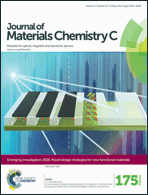
Profile: Emerging Investigators 2016: novel design strategies for new functional materials
Journal of Materials Chemistry C profiles contributors to the Emerging Investigators issue.

J. Mater. Chem. C, 2016,4, 3885-3889
https://doi.org/10.1039/C6TC90079H
Colloidal metal halide perovskite nanocrystals: synthesis, characterization, and applications
In this Highlight, we review recent developments in colloidal perovskite nanocrystals, including the chemical synthesis, characterization and optoelectronic applications.

J. Mater. Chem. C, 2016,4, 3898-3904
https://doi.org/10.1039/C5TC04116C
Transition-metal-nitride-based thin films as novel energy harvesting materials
We review experimental and theoretical research on ScN- and CrN-based transition-metal nitride materials for thermoelectrics, drawing parallels with piezoelectricity.

J. Mater. Chem. C, 2016,4, 3905-3914
https://doi.org/10.1039/C5TC03891J
Understanding the vapor–liquid–solid mechanism of Si nanowire growth and doping to synthetically encode precise nanoscale morphology
Bottom-up, chemical methods to control the morphology of semiconductor nanostructures are a promising complement to the top-down fabrication techniques that currently dominate the semiconductor industry.

J. Mater. Chem. C, 2016,4, 3890-3897
https://doi.org/10.1039/C5TC03898G
Polymorphism as an emerging design strategy for high performance organic electronics
In this review, we present a unique perspective of polymorphism as a design tool to enhance electronic performance and fundamental understanding of the relationship between charge transport and molecular packing in organic electronics.

J. Mater. Chem. C, 2016,4, 3915-3933
https://doi.org/10.1039/C5TC04390E
Single-step synthesis of hyperbranched, luminescent Mn2+-doped ZnSe1−xSx nanocrystals using dichalcogenide precursors
Taking advantage of dichalcogenide precursors, a simple, single-step heat-up method for obtaining Mn2+-doped ZnSe1−xSx nanocrystals (NCs) is presented.

J. Mater. Chem. C, 2016,4, 6907-6913
https://doi.org/10.1039/C6TC01207H
Ultrafast charge carrier dynamics in CH3NH3PbI3: evidence for hot hole injection into spiro-OMeTAD
Hybrid organic–inorganic metal perovskites have emerged as highly promising materials for solar energy conversion. In this study the influence of excess energy on the initial photo-products in CH3NH3PbI3, as well as the hole injection into spiro-OMeTAD have been investigated.

J. Mater. Chem. C, 2016,4, 5922-5931
https://doi.org/10.1039/C6TC00763E
Synthesis of polyquinolines via an AA/BB-type aza-Diels–Alder polymerization reaction
We report a general, modular, and high yield route to quinoline-based functional materials for applications in organic electronics.
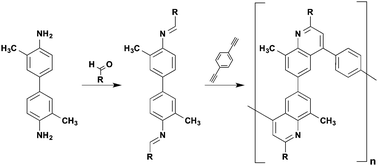
J. Mater. Chem. C, 2016,4, 4060-4066
https://doi.org/10.1039/C5TC03974F
Targeted design leads to tunable photoluminescence from perylene dicarboxdiimide–poly(oxyalkylene)/siloxane hybrids for luminescent solar concentrators
The chain length and branching of the organic backbone of poly(oxyalkylene)/siloxane ureasils can be used to control the placement and orientation of a covalently-grafted perylene, leading to tunable photoluminescence.

J. Mater. Chem. C, 2016,4, 4049-4059
https://doi.org/10.1039/C5TC03952E
On the impact of isomer structure and packing disorder in thienoacene organic semiconductors
Using benzodithiophene as a model compound, the concept of the disordermer is introduced to discuss how intermolecular isomerism in the solid state can result in a wide range of available molecular packing arrangements that in turn influence the magnitude of the electronic coupling, a key parameter of importance to the performance of organic semiconductors.

J. Mater. Chem. C, 2016,4, 4040-4048
https://doi.org/10.1039/C5TC03900B
Optical study of electrochromic moving fronts for the investigation of ion transport in conducting polymers
Spectroscopic investigation of electrochromic moving fronts enables the study of ion transport in complex conducting polymer film morphologies.

J. Mater. Chem. C, 2016,4, 3942-3947
https://doi.org/10.1039/C5TC04354A
The preparation and phase diagrams of (7Li1−xFexOD)FeSe and (Li1−xFexOH)FeSe superconductors
We report the phase diagram for the superconducting system (7Li1−xFexOD)FeSe and contrast it with that of (Li1−xFexOH)FeSe both in single crystal and powder forms.
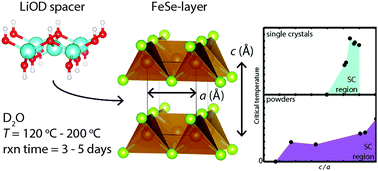
J. Mater. Chem. C, 2016,4, 3934-3941
https://doi.org/10.1039/C5TC04041H
Cyclic azasilanes as volatile and reactive precursors for atomic layer deposition of silicon dioxide
A suite of four volatile aminosilanes, cyclic azasilanes, was used to deposit silicon dioxide (SiO2) films by atomic layer deposition (ALD) over the temperature range 100–300 °C by reaction with O3.
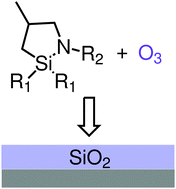
J. Mater. Chem. C, 2016,4, 4034-4039
https://doi.org/10.1039/C5TC03896K
On the design of atropisomer-separable photochromic diarylethene-based metal–organic framework linkers
The relative stability and accessibility of atropisomers plays a prominent role in the efficacy of diarylethene-based photochromic materials.

J. Mater. Chem. C, 2016,4, 4028-4033
https://doi.org/10.1039/C6TC00131A
Photochromic spiropyran- and spirooxazine-homopolymers in mesoporous thin films by surface initiated ROMP
A strategy towards photochromic SI-ROMP homopolymers based on spiropyran and spirooxazine in mesopores is presented and photochromism is systematically investigated using UV-VIS spectroscopy and NMR.

J. Mater. Chem. C, 2016,4, 4067-4076
https://doi.org/10.1039/C5TC04054J
Design of noncentrosymmetric perovskites from centric and acentric basic building units
We present a detailed crystal-chemistry approach to lift inversion symmetry in inorganic crystals.

J. Mater. Chem. C, 2016,4, 4016-4027
https://doi.org/10.1039/C5TC04239A
‘Ferroelectric’ metals reexamined: fundamental mechanisms and design considerations for new materials
Free electrons suppress the ferroelectric instability of BaTiO3, but not that of CaTiO3 or the recently synthesized ‘ferroelectric’ metal LiOsO3.
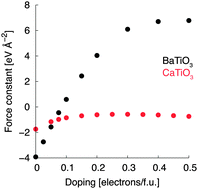
J. Mater. Chem. C, 2016,4, 4000-4015
https://doi.org/10.1039/C5TC03856A
Effects of structural variations on the optical and electronic properties of eumelanin-inspired small molecules
In this work, five new eumelanin-inspired indole small molecules have been synthesized which differ by the substituents attached to the para position of the phenylene ring.
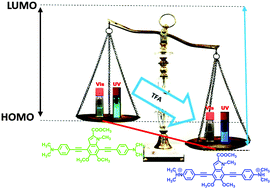
J. Mater. Chem. C, 2016,4, 3995-3999
https://doi.org/10.1039/C5TC03982G
Surface plasmonic spectroscopy revealing the oxidation dynamics of copper nanowires embedded in polycarbonate ion-track templates
Surface plasmonic spectroscopy reveals the oxidation dynamics of copper nanowires embedded in polycarbonate ion-track templates. A method is proposed to prevent natural oxidation of metal nanostructures in general.
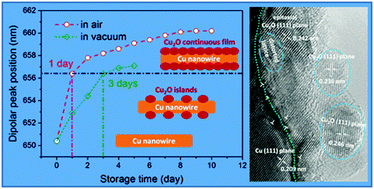
J. Mater. Chem. C, 2016,4, 3956-3962
https://doi.org/10.1039/C5TC03897A
A novel design strategy for nanoparticles on nanopatterns: interferometric lithographic patterning of Mms6 biotemplated magnetic nanoparticles
Top-down surface patterning technique, interferometric lithography, is combined with bottom-up magnetite nanoparticle biomineralisation using Mms6 to form magnetic nanoscale arrays.
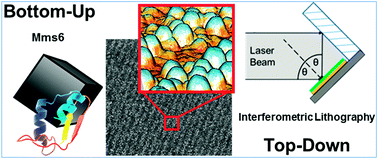
J. Mater. Chem. C, 2016,4, 3948-3955
https://doi.org/10.1039/C5TC03895B
Side-chain boron difluoride formazanate polymers via ring-opening metathesis polymerization
The synthesis, characterization, and ring-opening metathesis polymerization of a norbornene-functionalized boron difluoride formazanate complex is reported. The spectroscopic and electrochemical properties of monomer/polymer are compared and discussed in detail.
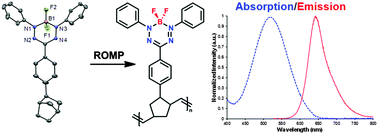
J. Mater. Chem. C, 2016,4, 3987-3994
https://doi.org/10.1039/C5TC03287C
3D-ordered carbon materials by melt-shear organization for tailor-made hybrid core–shell polymer particle architectures
The melt-shear organization technique for tailor-made polystyrene-co-polyacrylonitrile (PSAN) shell and silica core particles is investigated yielding easy-scalable carbonaceous porous films after etching and appropriate thermal treatment.

J. Mater. Chem. C, 2016,4, 3976-3986
https://doi.org/10.1039/C5TC03483C
Surface roughness boosts the SERS performance of imprinted plasmonic architectures
Rough 2D plasmonic crystals pose as inexpensive and easily processed SERS substrates exhibiting enhancement factors up to 1.6 × 1010.

J. Mater. Chem. C, 2016,4, 3970-3975
https://doi.org/10.1039/C5TC02779A
Contorted aromatics via a palladium-catalyzed cyclopentannulation strategy
A palladium-catalyzed cyclopentannulation provides access to contorted aromatics that afford solubility benefits while maintaining pi–pi stacking motifs.

J. Mater. Chem. C, 2016,4, 3963-3969
https://doi.org/10.1039/C5TC02305J
Correction: Photochromic spiropyran- and spirooxazine-homopolymers in mesoporous thin films by surface initiated ROMP
J. Mater. Chem. C, 2016,4, 4077-4077
https://doi.org/10.1039/C6TC90045C
About this collection
Journal of Materials Chemistry C is proud to present this themed issue highlighting 2016’s rising stars of materials chemistry research. This issue gathers the very best work from materials chemists in the early stages of their independent career, with a special focus on novel design strategies for new functional materials.
Each contributor was recommended by our prestigious Editorial Board as carrying out work with the potential to influence future directions in materials chemistry. Congratulations to all of those who feature on their important work so far in the field of materials for optical, magnetic and electronic devices.